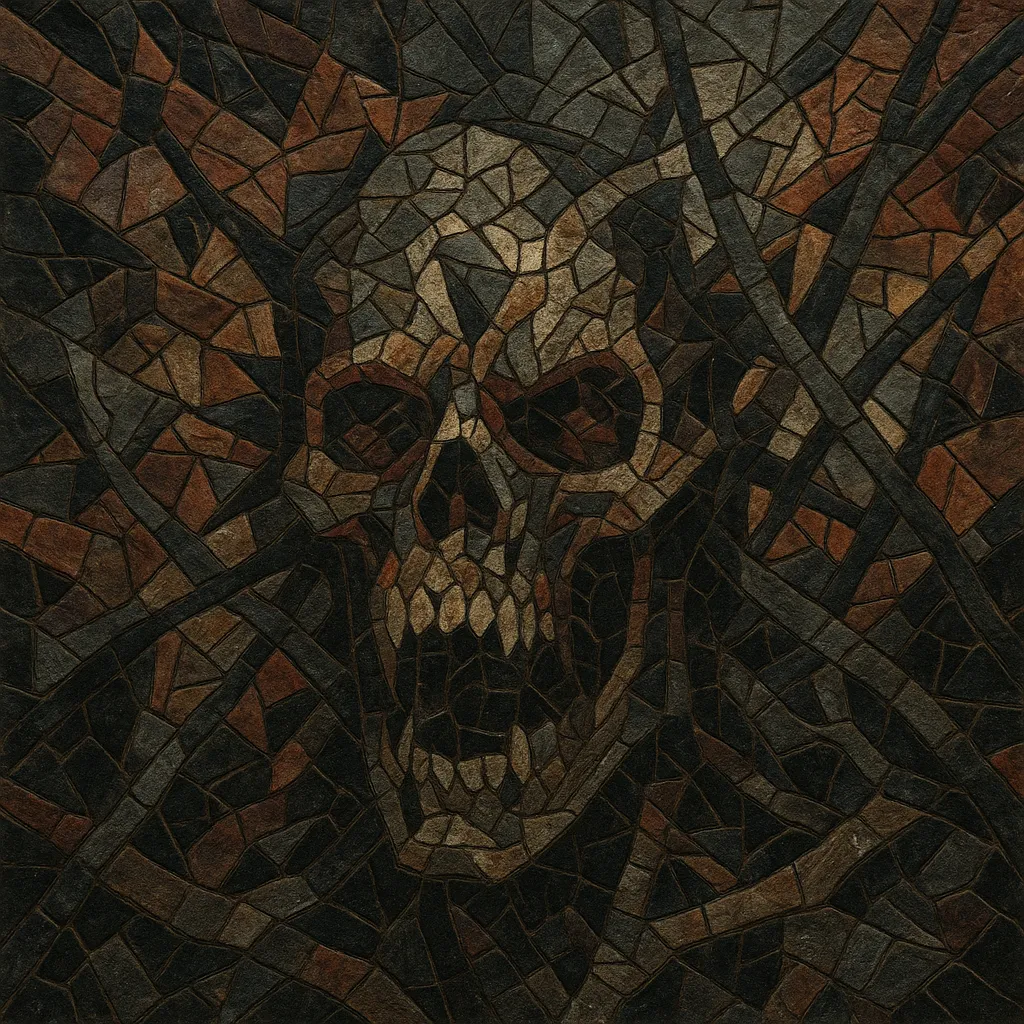Dissonant death metal is a branch of death metal that foregrounds atonality, angular riffing, and tense, unstable harmonies. Instead of traditional power‑chord grooves or neoclassical lead work, it relies on clusters, tritones, seconds, and chromatic voice‑leading to create a nauseating, labyrinthine atmosphere.
Rhythmically, the style favors jagged phrasing, polymeters, and sudden tempo shifts, while vocals remain predominantly deep growls that enhance the sense of dread. Production often balances clarity and claustrophobia: drums are articulate yet cavernous, and guitars are dense but deliberately abrasive.
The aesthetic draws from modern classical dissonance as much as from early 1990s death metal, channeling existential unease and surreal or cosmic horror rather than gore alone.
The seeds of dissonant death metal appeared in the early–mid 1990s as some death metal bands began to abandon conventional tonal riffing for more angular, unsettling harmonic language. Immolation’s early work introduced grinding, chromatic chord shapes and unusual voice‑leading, while groups like Demilich and Incantation stretched form, atmosphere, and harmonic instability. The watershed came with Gorguts’ 1998 album “Obscura,” which reimagined death metal through atonal clusters, skittering rhythms, and abrasive counterpoint—effectively codifying the genre’s core vocabulary.
In the 2000s, the approach spread and diversified. New Zealand’s Ulcerate blended glacial atmosphere, complex drum architecture, and dissonant chord stacks; Australia’s Portal pushed the style into nightmare surrealism; and North American and European undergrounds incubated numerous offshoots. Independent labels (e.g., Willowtip, Profound Lore, Dark Descent, Relapse) became crucial platforms, fostering a networked scene that valued experimentation, density, and a modern‑classical sense of tension.
The 2010s saw a flourishing of acts (Artificial Brain, Pyrrhon, Ad Nauseam, Baring Teeth, Mitochondrion) that hybridized dissonant harmony with technical death metal precision, avant‑metal textures, and atmospheric weight. Gorguts’ “Colored Sands” (2013) reaffirmed the style’s compositional ambitions. The idiom influenced adjacent spheres—especially blackened death and dissonant black metal—while continuing to evolve via extended techniques, nuanced production, and ever more intricate rhythmic design.
Dissonant death metal’s legacy lies in its refutation of traditional tonal centers and song forms. Its focus on unease, abstraction, and controlled chaos reshaped expectations for extreme metal composition, inspiring subsequent waves of artists to treat harmony and rhythm as sources of psychological narrative rather than mere aggression.


